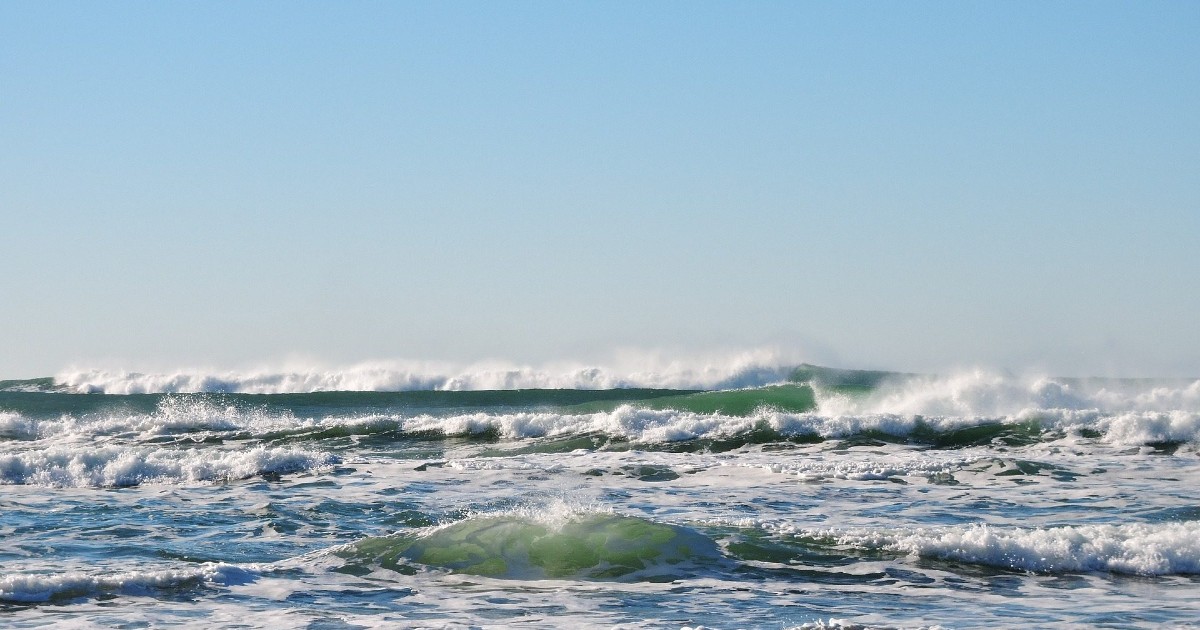Environment
World’s oceans, atmosphere are simmering as El Niño approaches, and it’s going to get worse
Published
11 months agoon

According to the India Meteorological Department (IMD), there is a nearly 70% chance of an El Niño style event developing this monsoon, raising concerns that the weather phenomenon could threaten agriculture, consumption, and an economy that is still regarded as the world’s fastest growing and better positioned to weather global headwinds than most emerging markets.
A repeating climate pattern so powerful that it can drive global average temperatures to record highs while also causing cliff-crushing storms and crop-destroying droughts all around the world is most likely to make its big comeback in 2023. Often feared as the Earth’s original disruptor, El Niño is the most significant global form of climatic variability in the capacity that it touches the earth.
While this phenomenon develops in the eastern Pacific, the shift in patterns redistributes heat around the globe, disrupting the entire global atmospheric circulation. However, now with increased global warming, the cycle may become stronger and is already causing more extreme weather.
What is El Niño?
El Niño is a climate pattern characterised by unusually warm surface waters in the eastern tropical Pacific Ocean. The El Nino phenomenon is the “warm phase” of a bigger phenomenon known as the El Niño-Southern Oscillation (ENSO). El Nino affects ocean temperatures, ocean current speed and strength, coastal fisheries health, and weather. Its episodes occur over sporadic periods of two to seven years. However, it is not a regular cycle or predictable in the same way that ocean tides are.
During an El Niño phenomenon, the westward-blowing trade winds weaken along the Equator. This change in wind speed and air pressure causes the warm surface water to move eastward along the equator. It causes the warm water to deepen the oceanic water layer by as much as 500 feet, disrupting the productive coastal ecosystem.
El Niño also causes widespread and occasionally severe climatic changes. Increased precipitation, rainfall, coastal floods, and soil erosion. This phenomenon does not just bring rain to South America; it also causes droughts in Indonesia and Australia. As reservoirs dry up and rivers carry less water, the region’s water supply is jeopardised, threatening agriculture.
Powerful El Niño occurrences also affect global atmospheric circulation. The disturbance of global atmospheric circulation caused by El Nino extends beyond the Pacific Rim states. El Niño episodes that are strong contribute to decreased monsoons in India and Southeast Asia. ENSO has even contributed to greater rainfall in Sub-Saharan Africa during the rainy season.
Furthermore, El Niño-related floods have been linked to an increase in cholera, dengue fever, and malaria in some parts of the world, as drought causes wildfires, adding to respiratory difficulties.
What will the onset of El Niño mean to the world?
According to the World Meteorological Organisation, there is a 66% chance that the annual average near-surface global temperature will rise above 1.5 degrees Celsius above pre-industrial levels at least once between 2023 and 2027. Furthermore, the 2015 Paris Agreement designated 1.5 degrees Celsius as the worldwide target for avoiding the worst effects of greenhouse gas emissions and human-caused climate change. It also expects that at least one of the next five years, and the five-year period as a whole, will be the warmest on record.
The world’s hottest year on record was 2016, which coincided with a strong El Niño. The last eight years have been the warmest on record, reflecting the longer-term warming trend caused by greenhouse gas emissions. If El Niño develops, there is a good chance that 2023 will be even hotter than 2016.
A warming El Niño is predicted to develop in the next few months, combining with human-caused climate change to push global temperatures into unknown territory, according to WMO Secretary-General Petteri Taalas. He went on to say that this will have far-reaching consequences for health, food security, water management, and the environment. We must be ready.
The El Niño effect will result in dryer and warmer weather in the northern US, as well as heavy rains and flooding around the US Gulf Coast and Southeast. According to the National Oceanic and Atmospheric Administration (NOAA), the global temperature rises by about 0.2 degrees Celsius during an El Niño occurrence. As a result, the planet will see more extreme heatwaves, longer hot seasons, and stronger storms. Hotter and drier weather is expected in Indonesia and Australia, increasing the risk of wildfires. Monsoons in India and rains in South Africa may shorten even more, but rains and flooding in East Africa may increase.
El Niño also poses a threat to marine species along the Pacific Coast. Under normal circumstances, a phenomenon known as ‘upwelling’ draws chilly, nutrient-rich water from the ocean depths. When El Niño happens, this process is inhibited or totally halted. This means fewer phytoplankton near the coast, which means fewer food sources for certain fish.
In March 2023, scientists discovered that worldwide sea surface temperatures had reached an all-time high. El Niño is expected to aggravate the situation. Warmer water causes coral reefs to bleach, putting them at risk of starvation.
As for India, the IMD would provide agro-meteorological advisory services and forecasts for each of India’s 700-plus districts based on various rainfall scenarios, which would be distributed through Krishi Vigyan Kendras, a network of federally run farm institutes.
If El Niño has an influence on India’s agricultural activities, it may also have an impact on the Indian economy, as a lack of commodities will lead to an increase in inflation. With El Niño likely to start having an impact this year, its influence on rain might have a negative impact on main crops such as rice, sugar, cereals, pulses, and others, leading to a lack of critical food products and increasing inflation.
Furthermore, because agriculture employs a large portion of the population, a bad season could have an influence on their lives as well. In all, we need to be guarded against an El Niño level event, for the sake of our communities and the world order alike.
You may like
-


Indian Government’s Crackdown on Social Media: A Threat to Free Speech
-


The Simpsons did it again! This time foreseeing Apple’s latest technological innovation – The Apple Vision Pro
-


Dilip Venkatraman was promoted to SVP and business head for Media and Entertainment at Tech Mahindra
-


Swati Bhattacharya steps down as FCB India CCO
-


Lodha Ventures onboards Mahesh Shah as President of Corporate Communications
-


Nippon India Mutual Fund names Kaiyomurz Daver as Chief Marketing Officer


